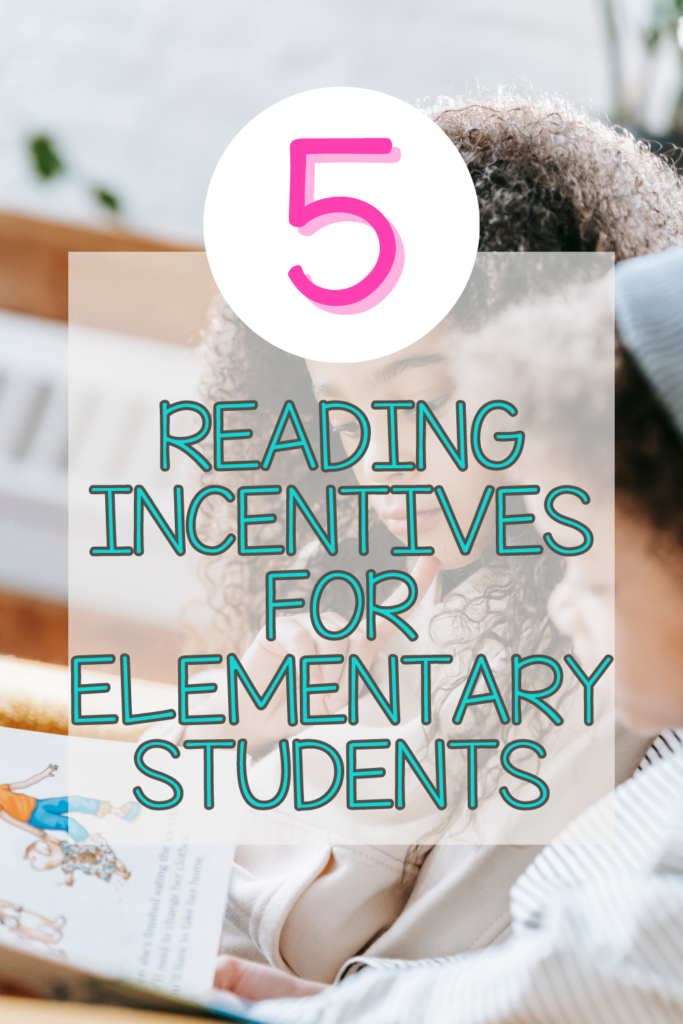Simple and Engaging Reading Incentives for Elementary Students
Whether you have been a classroom teacher for many years or just one year, you know fostering a love for reading among our young students is important. Helping students become avid readers often begins in the primary grades. We are in charge of laying the foundation for a lifelong passion for literature, which is definitely challenging. Am I right? Some students absolutely love books, and others do not have a passion for reading right away. But, whether students love reading or haven’t found the urge to pick up a book. There are some great reading incentives for elementary students.
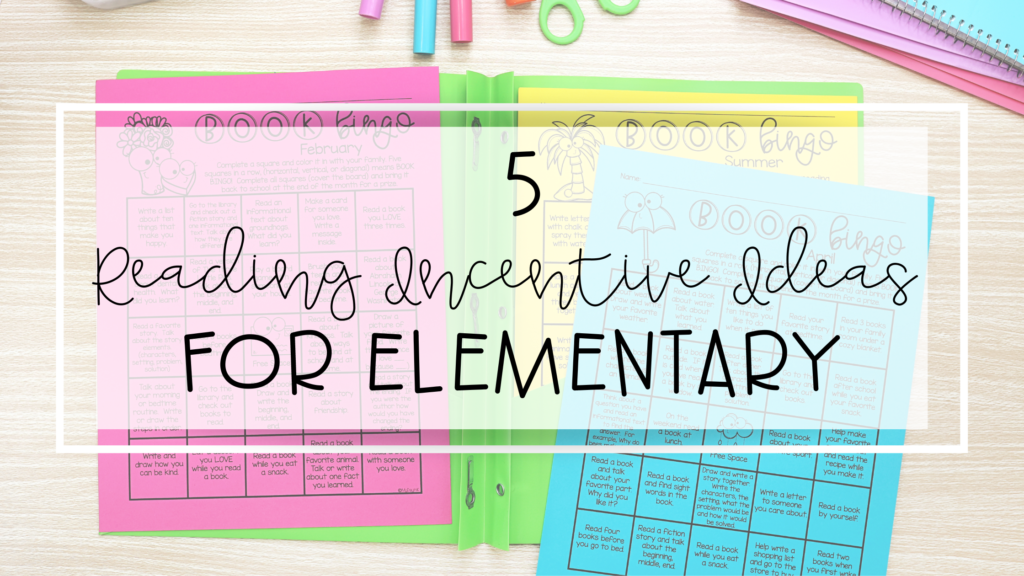
Reading Goals and Challenges
I remember the days of the Pizza Hut buffet like it was yesterday—the Tiffany lights with the “Pizza Hut” logo, the aisle of pizzas, breadsticks, and salads. But, the best part was walking into that Pizza Hut at the end of the school year with my free personal pan pizza after the BookIt reading challenge that I looked forward to every year. That pizza never tasted so good.
As teachers, we want students to read for enjoyment. Not feel as though they are completing an assignment or must read for a grade. Setting goals or challenging students is one way to encourage reading without the grade. At the beginning of the year, set reading goals for your students. Then, pick a specific time when you will meet with them again to discuss these goals and their progress.

Encourage them to track their progress using an online reading log or a physical reading journal. A daily, weekly, or monthly reading goal can be a great way to motivate young readers, helping them stay committed to their reading journey. Remember, these journals or logs shouldn’t be for a grade. But it is an interactive way for students to see their progress in reading. Just like many adults use apps like GoodReads or Boomory to track book titles they have read or would like to read.
How Reading Incentives Can Get Students Reading More
Encouraging students to read more isn’t just about assigning tasks; it’s about inspiring a genuine love for literature. Reading incentives for elementary students can help increase student engagement with books. With power of goal setting, the influence of recognition and peer cheers,sense of community building, connection to real-world incentives plus including some fun and variety, the sense of community building, and the connection to real-world incentives, we’ll uncover how these strategies effectively fuel students’ enthusiasm for reading. Let’s embark on a journey to understand why and how reading incentives can make a significant impact on getting students to read more.
Motivation through Goal Setting
Setting clear reading goals for students provides a sense of purpose and direction. When students have specific targets, it motivates them to engage in independent reading to achieve those goals. Utilizing tools like monthly reading goals, online reading logs, or physical reading journals gives students a tangible way to track their progress and encourages a continuous commitment to their reading journey.
Recognition and Peer Influence
Public acknowledgment plays an important role in motivating students to read more. Recognizing students as “Star Readers” for reaching milestones and showcasing their achievements on a bulletin board or data wall not only celebrates individual success but also influences peers positively. This recognition creates a culture where reading accomplishments are valued, creating a ripple effect of motivation throughout the classroom.

Incorporating Fun and Variety
Bringing in an element of fun and variety into reading activities is a powerful way to keep students engaged. Creative reading incentives for elementary students such as Reading BINGO boards, book tastings, or challenges that involve different genres make the reading journey enjoyable. By turning reading into an exciting adventure, students are more likely to explore diverse literary worlds, enhancing both their interest and commitment to reading.
Building a Sense of Community
A shared reading experience can be a strong motivator for students. Implementing a classroom reward system that involves the entire class in achieving a common reading goal builds a sense of community. When students work collaboratively towards a collective target, it reinforces the idea that reading is not just an individual activity but a shared endeavor. This communal approach creates a supportive environment that encourages students to read more for the benefit of the entire class.
Connecting Reading to Real-World Incentives
Linking reading incentives to real-world rewards provides students with a tangible connection between their academic efforts and enjoyable experiences. Whether it’s earning free time, a pizza party, or admission to local attractions like Chuck E. Cheese, these incentives make the reading process more relevant and rewarding. Students understand that their reading achievements have meaningful, real-world consequences, motivating them to read more consistently.
Reading Incentives for Elementary Students
These reading incentive ideas make reading more engaging and rewarding by adding recognition, fun challenges, and real-world perks. They not only encourage students to achieve reading milestones but also create a positive reading culture in the classroom. Let’s explore some creative ideas that will capture young readers’ imaginations and make the world of literature fun and memorable.
Star Reader Awards
Acknowledge students as “Star Readers” when they achieve a reading milestone. Display their names on a bulletin board or a data wall, celebrating their accomplishments and inspiring others. The milestones can be different for individual students based on their needs and abilities. These milestones can be established when a teacher meets with a student to set their reading goals.
Book Tastings
Create a “book tasting” event in your classroom, allowing students to sample different genres. Set up reading stations with excerpts from various books and let them choose their next read. This engaging activity can spark their interest in different types of literature.
Whole Class Reward System
Implement a comprehensive classroom reward system where the entire class works together to achieve a common reading goal. Rewards could include extra free time, a pizza party, or a visit to the local library. Create a class bulletin board to track minutes read or books read. There are plenty of bulletin boar ideas out there.
Accelerated Reader Program
Utilize a program like the Accelerated Reader program to assess and reward students’ independent work. Individual awards, such as certificates or small prizes, can motivate students to excel in their reading journey. There are many different programs out there, even apps like Epic! certificates for the number of books read. They also give students digit medals after reading certain books, number of books, etc.
Reading BINGO Boards
One reading incentive I have used in my classroom was reading BINGO boards. I wanted a way to include families in my student’s reading. Plus, I found BINGO to be a great reading tool to get students reading at home. Introduce Reading BINGO boards for at-home reading challenges. Each square represents a different genre or reading activity, making it fun for students to explore the literary world (even if it is just Judy Moody or Frog and Toad 😉). Reward completed BINGO boards with small prizes or a homework pass.
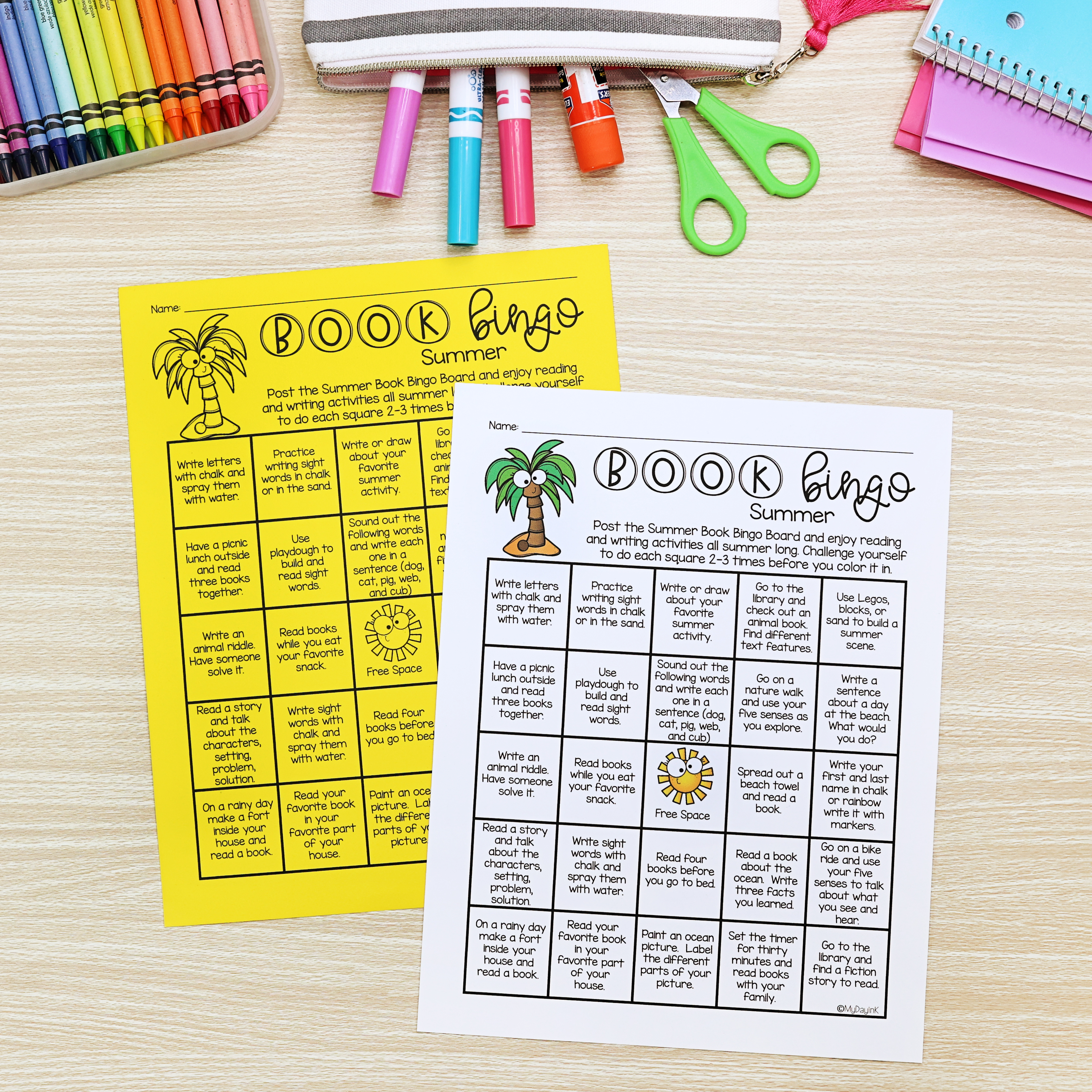
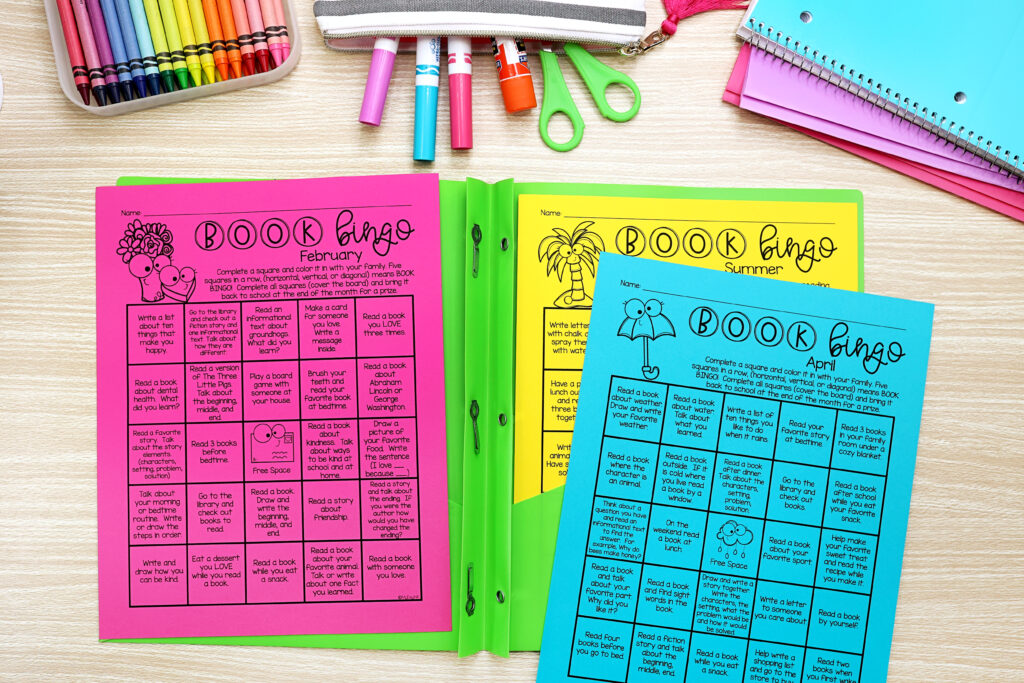
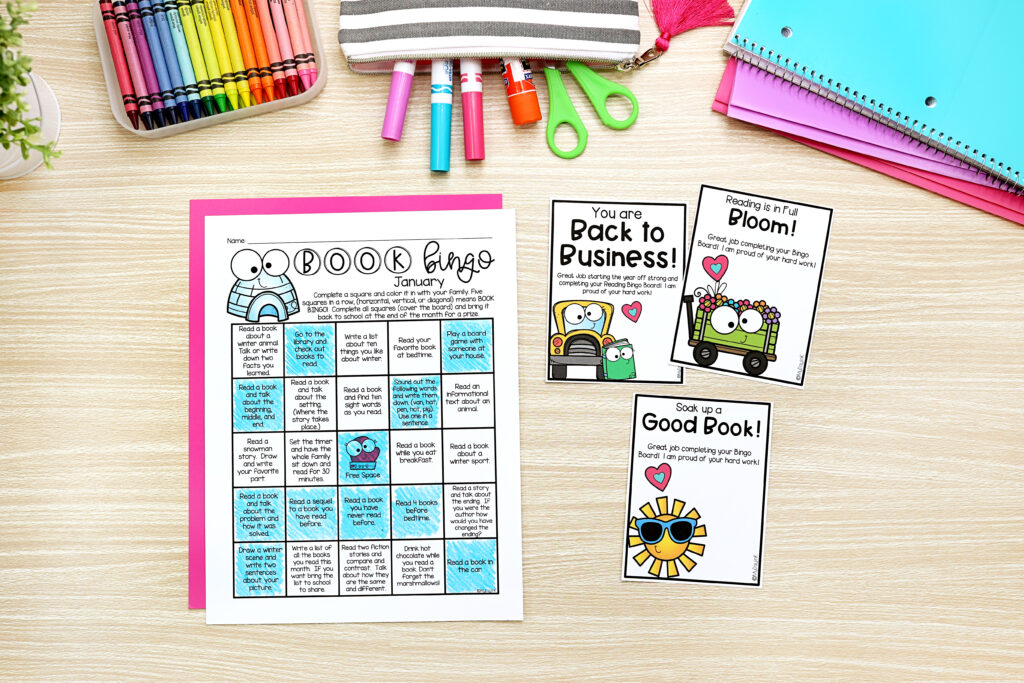
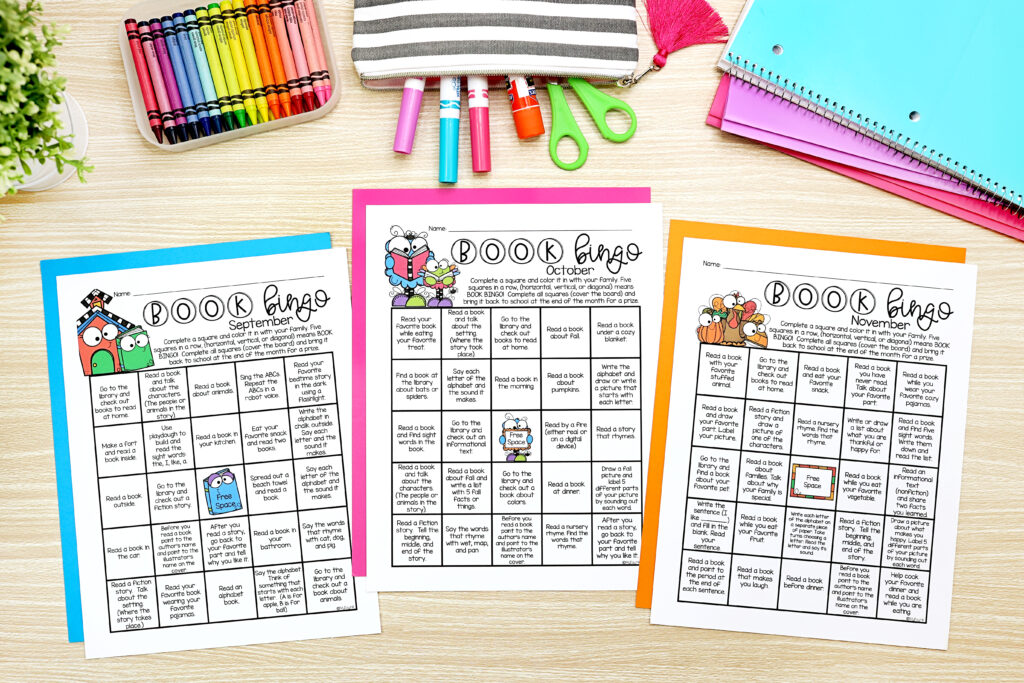
I like to remind my students that reading does not always have to be with a book. There are many ways to enjoy a story like:
- Book Videos (Storyline Online)
- Audiobooks
- Podcasts
- Comics
- Magazines
Reading Adventures Beyond the Classroom
Encourage students to explore their local libraries and use summer reading programs. Many libraries offer free admission to places like Chuck E. Cheese or even provide free books as incentives. These may be summer programs or programs that run throughout the year. This promotes a love for reading and strengthens the connection between the school and the community.
Incorporating reading incentives for elementary students, like reading BINGO, into your classroom can be a powerful tool to transform reluctant readers into avid book enthusiasts. Bringing together a sense of fun and adventure into reading will create an environment where young readers grow. Whether it’s celebrating reading milestones, heading on literary adventures, or enjoying the rewards of a well-earned pizza party, these strategies will help make learning to read an exciting and fulfilling one for elementary school students.
List of Reading Incentive Programs:
